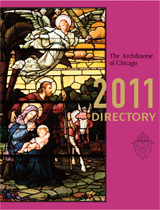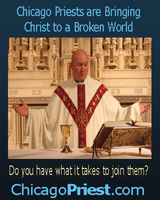A look at child exploitation during abuse-prevention month

A regular feature of The Catholic New World, The InterVIEW is an in-depth conversation with a person whose words, actions or ideas affect today's Catholic. It may be affirming of faith or confrontational. But it will always be stimulating.
We are living in a sexually toxic society that views children as objects and uses media to exploit them. That’s what prevention expert Cordelia Anderson shared at the fourth-annual National Safe Environment Leadership Conference held last month and sponsored by the archdiocese’s Office for Protection of Children and Youth.
Anderson operates a training and consultation business based in Minneapolis and has 30 years of experience in prevention — promoting healthy development and preventing harmful behaviors.
She spoke with editor Joyce Duriga while at the conference. April is national Child Abuse Prevention Month.
Catholic New World: How have violence and sex in movies and on television affected the well-being of youth today?
Cordelia Anderson: Media has had a profound impact. It’s important to say that sexual abuse and other forms of violence happened long before we had media. But the media tells an important story about our culture. We have plenty of research to show that media becomes the super peer. Media becomes a way that people learn about what is expected about social norms.
We know full well that children imitate what they see. Teenagers imitate what they see. Adults imitate what they see. Even if they don’t imitate it, they are affected by the values and the messages that are there.
CNW: How pervasive is the problem of child exploitation?
Anderson: Exploitation is far more pervasive than the statistics around child sexual abuse because exploitation includes a child being abused and then it being photographed, child pornography.
We don’t have great statistics on that but we know there’s been an explosion because of technology affording the opportunity to be done and to be disseminated. We know that most of those children [being abused] are not being reported that are in those images.
Same with children who are prostituted. We now understand that children are who are being prostituted are not just the children we are seeing on the streets. In fact, most of them aren’t on the streets anymore. They are prostituted via technology. They are harder to see and harder to spot. And they may even be prostituted from their own families.
Child-sex tourism, child-sex trafficking are children being prostituted. It’s not just in other countries. It is right here. It is all connected back to how we come to view children as sexual objects, things for other’s sexual uses. And that connects back to the media.
When we have a media that sexualizes children, that makes them look like mini adults, sexually appealing, sexually arousing, it gets in the way of really understanding the harm that is done.
CNW: Is there a particular form of media that is the most destructive? It seems that the Internet would be the worst.
Anderson: It would be easier if it were just one form of media. The Internet is more of a means to disseminate a lot of information, so yes, it is when we think of media we have to include the Internet. But we also have to recognize that that has an incredible means to give people access to a lot of information, to disseminate and present.
Absolutely that is one. We still have to include television and movies. The other media we tend to not talk about enough is pornography.
CNW: Do you mean print pornography?
Anderson: All of the pornography. That is clearly what has transformed with technology.
CNW: Are children are being more targeted now?
Anderson: Children are being able to see it and in a sexually toxic society children are producing it because we train children to see themselves as sexual objects.
A sexually toxic environment trains children to be users, takers and pornography makers and to see themselves and their worth as a sexual object. Therefore they don’t think a whole lot about taking off their clothes and taking a picture of it.
That’s not something that, in our generation, we would have thought a whole lot about. Now it’s modeled for them all over the place. They may not realize they are producing and disseminating child pornography.
CNW: What role do you see faith institutions playing in childabuse prevention? What is our responsibility as people of faith in prevention?
Anderson: Faith has a huge role. First of all, faith is a powerful networking community in which we need to just talk about this. Faith could be a major leader talking about sex and sexuality.
Sometimes people think it is the place where it doesn’t get talked about and, in reality, it is a critical place to be talking about what does it mean to be sexually healthy. What does it mean to raise sexually healthy children? How do we do that in a sexually toxic environment? And what is our role in challenging and changing the sexually toxic environment?
CNW: What would you recommend we focus on doing to reduce this sexually toxic environment?
Anderson: We need to recognize the impact of living in a consumer culture. And what that has to do with faith is that, in many ways, the protective factor is to start giving them a sense of what we really value.
The consumer culture that turns everything in to a commodity, including sex and human beings, gives us a very clear message in marketing that what really matters is stuff. You just gotta get more stuff and you’ll be OK. We need to make it really clear it’s not about stuff.




